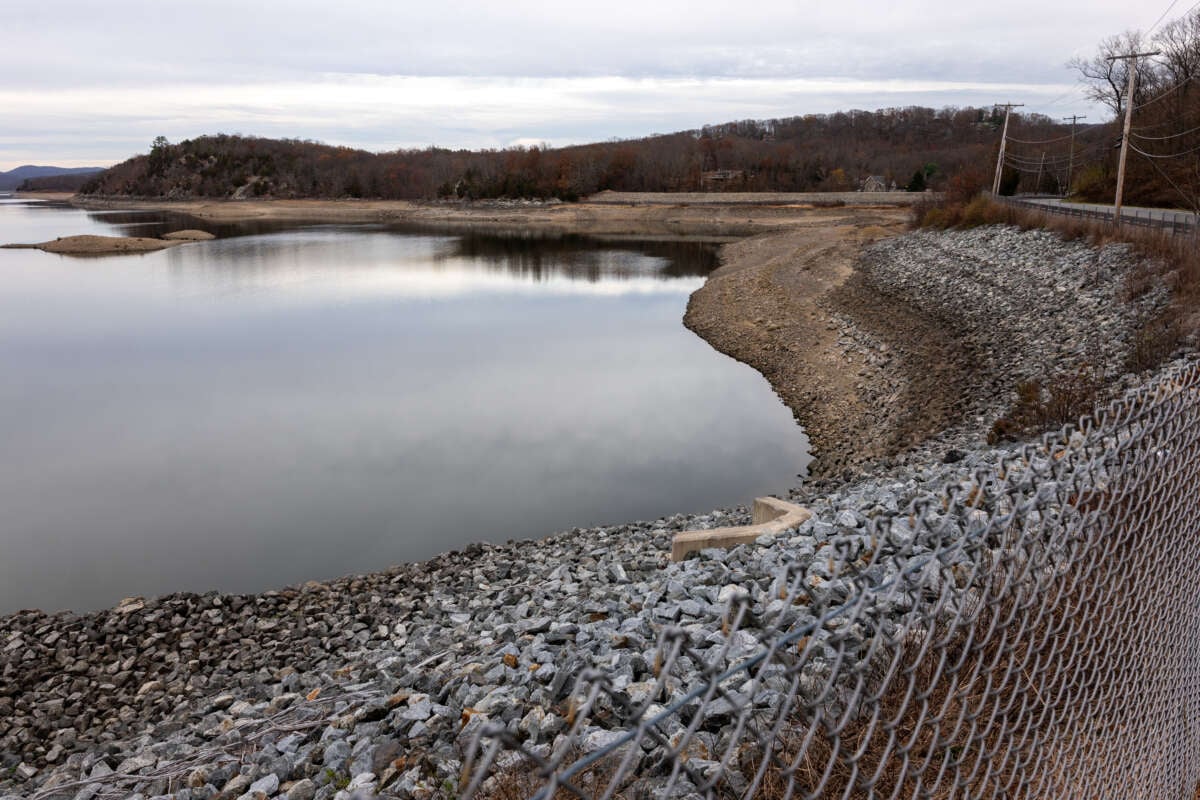Nearly 30 million people are living in areas of the US with limited water supplies as the country faces growing concerns over both water availability and quality, according to a new assessment by government scientists.
The US Geological Survey (USGS), which is part of the Department of the Interior, issued what it said was a first-of-its-kind report last week, with USGS Director David Applegate warning of “increasing challenges to this vital resource.” The Jan. 16 report, based on data from 2010 to 2020, examines not only water supplies but also demand patterns and water quality. The report showed that most of the country had supplies that exceeded demand during the period examined, but worrisome trends were noted.
“Water availability is an issue everywhere in our country and beyond,” Lori Sprague, USGS national program manager for the water availability assessment, said in a webinar presenting the report. “It raises the question — do we have enough water to sustain our nation’s economy, ecosystems and drinking water supplies?”
Among the key findings from the new analysis was that people who are considered “socially vulnerable” have a higher risk of experiencing limited water supplies. Overall, about 27 million people lived in areas where the USGS found a “high degree of local water stress.” And a higher proportion of the people living in those areas were considered socially vulnerable compared with those living in areas of more local water availability, the USGS said.
The report also added to evidence of widespread pollution in waterways across the US Midwest and High Plains regions where worrisome levels of nitrogen and phosphorus concentrations — tied in large part to large animal agriculture operations — can pose a threat to human health.
The USGS said that “substantial areas” of aquifers that provide about one-third of public water supplies have elevated concentrations of contaminants such as arsenic, manganese, radionuclides, and nitrate and that low-income and minority-dominated communities and people with domestic wells as their drinking water source experience increased exposure to this type of drinking water contamination.
Several regions were drawing on supplies that had percentages of concentrations of contaminants that exceed human health benchmarks for safety, the USGS reported.
And the USGS report reinforced concerns about climate change, saying that the “steady rise in global temperature as a result of human activity is causing changes in Earth’s water cycle.”
“The amount of water stored within and moving between vapor, liquid, and frozen components of the water cycle is shifting, with substantial consequences for water availability,” the USGS said.
Newly inaugurated President Donald Trump has expressed skepticism about climate change and already has started rolling back measures aimed at reducing the harmful impacts of the warming planet.
Climate changes that impact water availability include warmer and shorter winter seasons, extreme heat, drought, wind storms, reduced snow cover. The USGS noted that climate change impacts water quality as well, with threats to quality posed by rising water temperatures, flooding, and saltwater intrusion in coastal areas. In some places the balance between supply and demand is adequate but stream flow is altered in ways that are harmful to the local ecological community, the USGS said.
The agency cited three fish species that are “of conservation concern” and said that a large percentage of their habitat has been affected by water supply and use imbalances. One species, the Arkansas River shiner, had more than 50% of its habitat range in severe supply and use imbalance, for example.
The highest “interannual variability” in precipitation during the 2010–2020 period was noted in the California–Nevada, Texas, Southern High Plains, and the Southwest Desert hydrologic regions. And groundwater levels were found to be low in comparison to historical averages in key aquifers relied on by millions of people from California to the northern Atlantic coast.
The High Plains aquifers continued to show declines, which the USGS noted are part of a “long history of groundwater depletion in the region.” As well, a map of increasing stress on surface water supplies shows particularly dire conditions in the Central and Southern High Plains, and Texas.
Farmers irrigating crops remained the chief users of US water supplies, accounting for over 110 million gallons used per day, on average, in 2020, the USGS said.
The USGS has been estimating water use for decades, but hopes that its new modeling approaches will give it a more comprehensive understanding of water use across the US, officials said.
Our most important fundraising appeal of the year
December is the most critical time of year for Truthout, because our nonprofit news is funded almost entirely by individual donations from readers like you. So before you navigate away, we ask that you take just a second to support Truthout with a tax-deductible donation.
This year is a little different. We are up against a far-reaching, wide-scale attack on press freedom coming from the Trump administration. 2025 was a year of frightening censorship, news industry corporate consolidation, and worsening financial conditions for progressive nonprofits across the board.
We can only resist Trump’s agenda by cultivating a strong base of support. The right-wing mediasphere is funded comfortably by billionaire owners and venture capitalist philanthropists. At Truthout, we have you.
We’ve set an ambitious target for our year-end campaign — a goal of $250,000 to keep up our fight against authoritarianism in 2026. Please take a meaningful action in this fight: make a one-time or monthly donation to Truthout before December 31. If you have the means, please dig deep.
